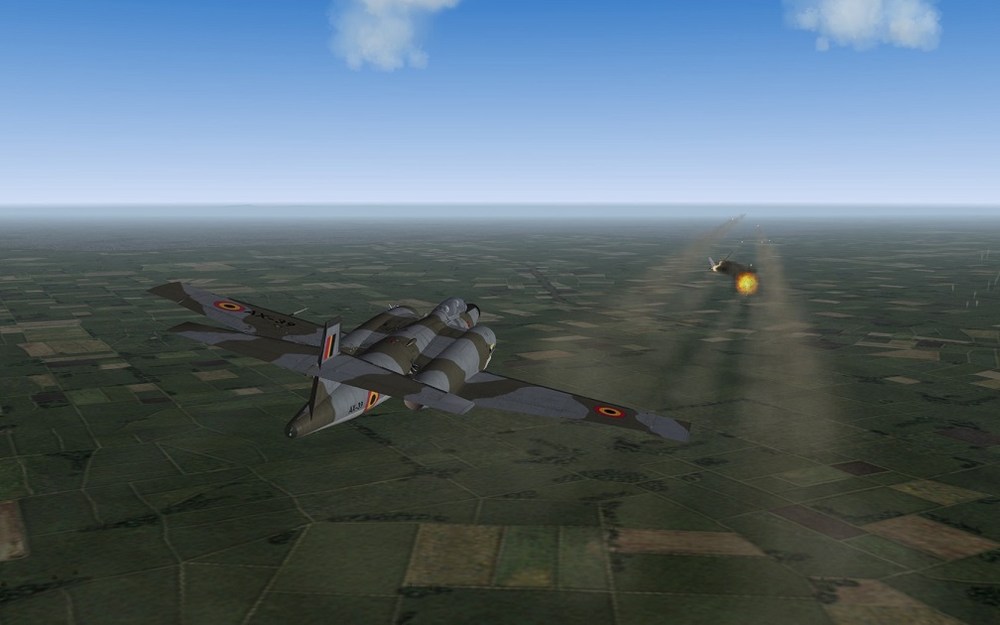-
Posts
1,290 -
Joined
-
Last visited
-
Days Won
11
Content Type
Profiles
Forums
Gallery
Downloads
Store
Everything posted by baffmeister
-
Yep. Real life but you can also add some really annoying pitch stability issues I was encountering plus other projects plus summertime. Public beta test FM attached. Hopefully I can finish this thing in October. The pitch stability issues can still show up but I don't think it's any worse than ThirdWire's Vampire which has a similar issue. At certain speeds, if you give the stick a large displacement forward or back, the plane will just continue climbing or descending and not return to level flight on it's own. I spent a lot of time balancing the tail with the auto trim turned off [AutoTrimLimit=0.0] and noticed it doesn't exhibit the odd behavior with auto trim off. At present I have the auto trim set to a minimal level of 0.15 but it's still enough to get the pitch instability at certain speeds. Anyway, the FM still needs some testing/improvements but will post it here for public testing: ImpalaMkII_DATA0.95.zip NOTE: The Impala has surprisingly large weight ratings for the weapon pylons but in real life, anything over about 1600lbs of racks/weapons would have required a reduction in fuel to stay under the 12000lb MTOW.
-
I agree with jeanba. I still think there is some room to improve the low speed performance of the TW MiG-21 but in general you want to keep the speed up. Better, and I think more realistic low speed behavior would improve the defensive capabilities as well as improve the potential for firing solutions during lower speed turns but only in certain situations. I've been trying a few things with the Bis FM to better match the low speed behavior as described in the flight manual but it involves too much conjecture at this point. I'm still taking a look at the charts from the CheckSix site but I need more data to test against before releasing anything. From the flight manual, it seems the MiG-21 can easily get into the higher alpha zone while the TW MiG-21 FM tends to get "stuck" at about 28deg AOA. There seems to be a number of reasons for that. TW modeled quite a bit of nose down pitch moment in the stall region and the lift distribution is almost 70% on the outer/aft wing panel which makes it more difficult to get the nose up at low speeds. It will take some research and a lot of testing to see what might be improved regarding the low speed/higher alpha performance.
-
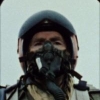
WWII airfields
baffmeister replied to Veltro2k's topic in Thirdwire: Strike Fighters 2 Series - General Discussion
What you're considering would be quite a bit of work, I think. You could add new runway lods to the terrain folder then adjust the Types.ini to use the new lods instead of the stock ones. Of course now you will have to use Mues Target Area Editor to reposition all the buildings, hangars, vehicles etc. that are now out of position. Not impossible but like I said, lots of work. Regarding Major Bloodnok's first post, I have that airfield installed but I don't think it ever had a data.ini file to go with it. I put one together with taxi, take off, and parking positions but haven't done any lights yet. Here's a screenshot and the ini file attached. With the curved taxi ways it was a PITA! WW2 Airbase ini: WW2AirbaseData.zip -

Further FM questions
baffmeister replied to mue's topic in Thirdwire: Strike Fighters 2 Series - Mods & Skinning Discussion
I originally thought the drag tables were just a modifier for the headline StallDrag=xxx entry but noticed the TW F-16 has StallDrag=0.000 for both inner and outer wing panels while still using a stall drag table. That's just an observation I'm passing along because I'm not sure how it works either. The F-16 still generates a noticeable increase in drag at the buffet point so the table seems to be doing something. When building a new FM I just grab those tables from a TW type with a similar wing design and move along. The above statement caught my eye. I always assumed, because every TW FM has a CDL table that ended at 28deg, there must be a limitation in the flight engine. The 28deg limit is probably OK for most of the older TW aircraft but might be a bit limiting for people wanting to model some of the newer high alpha types. I made an expanded CDL table to check out the behavior past 28deg alpha and it seems to work OK but needs more testing: CDLAlphaTableNumData=31 CDLAlphaTableDeltaX=4.00 CDLAlphaTableStartX=-60.00 CDLAlphaTableData=225.000,196.000,169.000,144.000,121.000,100.000,81.000,64.00,49.000,36.000,25.000,16.000,9.000,4.000,1.000,0.000,1.000,4.000,9.000,16.000,25.000,36.000,49.000,64.000,81.000,100.000,121.000,144.000,169.000,196.000,225.000 The above table probably looks familiar to many. The 28deg version is used on many TW types and is what you get when calculating for a symmetrical airfoil with an aspect ratio of 2.0 and an efficiency ratio of 0.80[80%] The posted table is calculated to +/- 60deg. I'm not really sure how best to implement this table. CDL=drag due to lift and the lift stops increasing at AlphaMax=xxx so it might make sense to limit the table to the AlphaMax range. As an example, your flying the latest high alpha wonder plane and it keeps making lift up to 38deg AOA. In this case it might make sense to stop the table at 40deg, 100.00 on the table. On the other hand, after reaching AlphaMax, the TW flight engine maintains the lift in a straight line [flat line/constant lift] to AlphaDepart=xxx. For the new wonder plane the AlphaDepart=60.0 AOA so it also might make sense to just continue the 100.000 data point right to the end of the table. Or maybe not. I'm not really sure how the game is modeling drag post 'AlphaMax' [edit] and AlphaDepart, maybe it has something to do with the stall drag table Mue was asking about. I don't fly the modern planes very often but I'm trying this new table out on one and for the MiG-21 Bis FM I've been messing with I've got the AlphaMax=33 so I'm trying the new table with a range to 36Deg. The table is an easy copy/paste job if anyone wants to try it out on a high alpha plane that uses the standard 28deg TW table. -

What If Screenshot Thread.......
baffmeister replied to Dave's topic in Thirdwire: Strike Fighters 2 Series - Screen Shots
-

The Kuznetsov
baffmeister replied to Gepard's topic in Thirdwire: Strike Fighters 2 Series - Mods & Skinning Discussion
Getting carrier planes to do nice landings can be a challenge. For the aircraft carrier data you can check this statement, which I assume shows the left/right offset of the touchdown point, then the fore/aft point. Mues lod viewer should work to adjust that. [Deck] SystemType=FLIGHT_DECK FlightDeckHeight=20.10 FlightDeckLength=396.0 FlightDeckWidth=84.0 LandDeckAngle=-10.0 LandingAimPoint=-0.35,-75.0//................check this If that doesn't work you might have to adjust the aircraft data ini. A slow stable approach works best. Sometimes increasing the drag on the landing gear and/or flaps can help. From my experience, to slow down the approach speed, you can adjust the LandingSpeed=XX to reduce the chance of an overshoot. Here's the TW A-4B: Aircraft Data [FlightControl] StallSpeed=46.80 CruiseSpeed=151.52 ClimbSpeed=195.04 CornerSpeed=158.72 LandingSpeed=50.69//...........you can try reducing this. MaxG=7.00 MaxSpeedSL=295.46 MachLimit=0.900 PitchDamper=0.6 RollDamper=0.4 YawDamper=0.0 GunBoresightAngle=0 RocketBoresightAngle=0 FlapSettingForLanding=2 FlapSettingForTakeOff=1 FlapSettingForCatapult=2 If the plane still has stability issues after lowering the approach speed you can try adjusting these AI values but it can be a long process trying to figure out what works best: [AIData] LandingPitchForSpeed=-0.07 LandingThrottleForAltitude=0.05 -
After looking through the rack weights it looks like there is some room to save some weight. Keeping in mind the posted documents show the weight for 2 racks, they seem to average around 30-35KG each, with some variation probably due to additional hardware required for certain weapons. ThirdWire is using 60KG for each main rack. On the other hand, the weight of the missile rails from the document are heavier than the 25kg used in the ThirdWire data but overall, with a full loadout, the weight reduction would be around 100kg. I checked the fuel plus tank weights for the 490L and 800L tanks and the ThirdWire tank+fuel is lighter than the document weights but the document info indicates a bit more fuel available. For the next update I will probably leave the tank weight/capacities as is but will include Svetlin's idea of using the 800L MiG-23 on the center pylon. It does look like the correct tank, from the diagrams in the document. Svetlin, I don't need any more translations for the previous documents but could you take a look at this one? I'm checking the deflection angles for the control surfaces and the TW rudder and ailerons match the documents but the H-Stab is different. I'm quite sure the red box I outlined is for the H-Stab but I'm curious about the statement underlined in yellow: For anyone interested, here's the info, at the bottom, for the 800L centerline tank. The way the fuel weight is divided might indicated the 490 and 800 liter tanks had 2 compartments:
-
It might be starting to make some sense. Using column P, the aircraft empty weight is 5843kg, 2883KG is the full internal fuel+pilot+missiles etc, and 8726kg is the sum of the parts. That's important because now I know which column to look under to get the weight of various racks etc. X and Y columns, as you mentioned, are the length of the horizontal and vertical arm, in meters, from the center reference point. PX and PY might be the resulting moment of the weight times the arm but that doesn't seem to quite work out. Using the two 490liter drop tanks the chart shows 940KG under P column for the mounted tanks and an arm of +1.34M under the X column. If I multiply those together I get a moment of 1259.6KG which is close to the 1257KG under the PX column but, not exactly. Anyway, that's been a big help!
-
Thanks Svetlin. This page looks like the introduction for the weight and balance section I've posted: This page has some info on the 490 liter drop tanks at the bottom of the page: There is another page that I haven't posted that shows information for the 800 liter centerline drop tank. Not sure when that tank became available and what MiG-21 versions it fits but it might be a nice add-on project for someone. ThirdWire only made the 490 liter version.
-
Another chart from the Soviet MiG-21Bis technical manual. One of the areas I've been looking at to potentially improve the MiG-21 performance is the rack weights, which seem quite high in the stock FM's. Some earlier information I found indicated there might be reason to believe the racks were lighter but the information was "anecdotal". I haven't been able to make much sense of this chart but it seems to have columns for assorted racks and weapons with weights in kilograms. I think some other columns might be used to calculate the CofG and CofG changes when weapons are dropped. The weights seem to be for weapons mounted in pairs. Any ideas?
-

What If Screenshot Thread.......
baffmeister replied to Dave's topic in Thirdwire: Strike Fighters 2 Series - Screen Shots
-
Thanks Svetlin, that's very helpful. I'm taking a closer look at the low speed performance of the stock FM to see if there may be some potential for adjustments. The stock FM makes maximum lift at about 28deg AoA, the same as the AoA limit in the flight manual but the charts show the MiG-21 still making lift up to about 33deg AoA. The 28deg limit was quite conservative giving 5-8deg of protection prior to the stall/departure zone. There were large roll oscillations above 28 deg but the plane maintained pitch stability and American test pilots soon learned they could safely exceed the 28deg limit. Some anecdotal information indicates Soviet pilots were familiar with that capability as well. ThirdWire has the stall buffet starting at about 15deg AoA while the flight manual says the buffet zone starts at 16-18deg AoA range, so there may be some room to adjust the AlphaStall and AlphaMax values while maintaining the same lift slope as the TW original. I'm going to see if I can find some charts that might give a better idea of the instantaneous turn rates and deceleration rates as the stock FM seems a bit limited when doing hard turns at lower airspeeds. By all accounts the MiG-21 had a good instantaneous turn rate and very good pointing ability at lower airspeeds. It might just be a case of increasing the elevator range a bit but will have to find the right chart so I can run some tests. More translations might be required!
-
Not much I can add to this topic at the moment but here are a few interesting pages from the "official" documents I have access to. From the "Arab Country" flight manual here is a sustained G curve for the MiG-21Bis. To test the stock ThirdWire FM I set the fuel burn to zero to maintain a constant weight, loaded 50% internal fuel as well as two missiles on the inner wing pylons. The external load group 1 mentioned in the flight manual is a configuration with light loads on the inner wing pylons. At full thrust and within about 100kg of the 7500kg chart weight I flew around in circles at 1000m/3280ft and tried to match some of the speeds on the chart and see what kind of sustained G I got. As usual, it's difficult to maintain a constant speed while going around in circles while maintaining a steady altitude but it seemed to me the stock TW FM leans towards some over performance, maybe about 0.5 to 1 G over the flight manual values. Past the 1040kmh/about 562kts on the chart, where the sustained G starts dropping off, the TW FM maintains the sustained G, or maybe even increases a bit, so the over performance increases past 1040kmh. I think the H-Stab on the real MiG-21 did a "gear change" or something like that around 0.90 mach, maybe to reduce pitch sensitivity. It's something I'm still looking into but it might explain the quick drop off in sustained G for the chart values, compared to the TW FM. I also have a Soviet document that might be something like a technical manual for pilots. Here's the front page: The Soviet document has a sustained G curve as well, [upper chart] but it uses mach number and the horizontal scaling looks different. The weight is for 7500kg and the resulting sustained G looks similar to the "Arab Country" chart. From the Soviet manual, an instantaneous/available G chart. [lower chart] I'm not sure what the solid line represents but the fine print mentions 28deg, which is the approved A0A limit in the flight manual. At any rate, at low altitude the available G for the TW FM is more or less a perfect match for the dashed line at 7000kg and zero altitude. Maybe at some point a Russian speaker can explain the details of the Soviet charts. At this point I'm just going to continue reviewing the manuals and maybe run a few more checks on the TW FM.
-

SF2 all in one release
baffmeister replied to logan4's topic in Thirdwire: Strike Fighters 2 Series - General Discussion
Interesting, possibly a last gasp but I get the impression SF-2 is picking up some new customers who are looking for something a bit more interesting than the cell phone games and whatever. -
Well, there is gravity and I've found the TW "wind tunnel" very good when tuning drag on some WW2 types although the late war prop planes can have issues with top speeds when using what I think are realistic CD0 values. I did a quick test on the MiG-19 and the sustained G seems very high for such an old jet. It seemed to be in the 8+ sustained G at high subsonic speeds although that's a bit of an approximation because it's quite difficult to maintain a constant G turn, especially with the old swizzle stick I'm using. With a proper performance chart it would be possible to adjust the CDL values to get something more realistic but at the moment I have no idea what might be accurate for a MiG-19. From some "web stuff" the DCS MiG-19 does 5.4G sustained but no mention of the weight, altitude or speed that occurs at.
-
Possible, I guess, but conjecture at this point. The thrust levels you mention are all a close match for the flight manual information with the big difference being the flight manual states the 97.1 KN thrust occurs in flight at mach 1 near the ground. Gepard, I'm not sure what type of technical documents you're looking at but maybe they are just giving a general overview of the engine? Most of the information you mentioned regarding the nozzle positions etc. don't seem to be mentioned in the flight manual but the 107% RPM limit [107.5% in flight manual] for the high pressure compressor/turbine is mentioned so at least that is a match. I guess the only other thing I can mention is the 68.5 kg/sec airflow into the engine for the "Sonderregime" . That doesn't sound like a big increase compared to the "Nachbrenner max" airflow of 67.9kg/sec so I'm wondering how it could get such a big boost in static thrust. That isn't something I know much about so is just conjecture on my part. Anyway, It's an interesting topic and hopefully we get more clarity at some point. Here's a couple of screen shots from the flight manual. I didn't notice any mention of the term "isdeliye" in the flight manual:
-
I had a look at an English language MiG-21Bis flight manual and things aren't what they seemed. The manual clearly states, on the first page, the static sea level thrust when using the "extra" afterburner is 7100kg which works out to 69627 newtons, EXACTLY what ThirdWire modeled in the stock FM. The flight manual also states the thrust of the standard afterburner is 6850kg or 67176 newtons. The flight manual says the "extra" afterburner generates 9900kg / 97086newtons but that is at mach 1 near the ground! With the stock ThirdWire MiG-21Bis FM and it's rather generic engine tables the Bis generates 100820 newtons at sea level and mach 1 so the stock TW FM already meets and slightly exceeds the flight manual data. For a "generic" mach table that's used on a lot of TW aircraft it's really quite close. There seems to be quite a bit of confusion on the internet regarding the thrust levels of the MiG-21Bis but I have to go with the flight manual information. The only other internet source I found that more or less agrees with the flight manual information is some promo material for the DCS MiG-21 Bis. If I remember correctly, they said the engine generates around 70000 newtons static thrust and "almost" 100000 newtons at low level and high speed. At this point I would suggest that anyone who downloaded the modified FM's I posted just remove them and revert to the stock FM. I tried to delete the posted files but not sure if it worked. Based on the flight manual information the thrust level for the TW FM should be OK below 13000ft but would be to high above that altitude. I could mod the FM to address that issue but at this point I think it would be better to run some performance checks on the stock TW FM and see how it matches up with whatever book numbers I can find.
-
Here's some additional information for any "home chefs" that might want to try the CD0 adjustment for the MiG-19S. I get the total CD0 values by adding up the headline CD0 values for the fuselage, inner and outer wing panels, V-stab and H-stab. The results for the stock Mig-19S and MiG-21MF are: MiG-19S = 0.0126 MiG-21MF = 0.0173 The MiG-21MF totals are actually quite close to what I've seen from some online sources and look reasonable compared to some reference info I have for similar types. Typically, the TW CD0 totals are considerably less than the reference values I have. I don't think it's possible for the MiG-19s to have a lower CD0 drag total than the MiG-21 so a conservative guess would put the MiG-19 at around 0.018 total. I actually think it would be quite a bit higher than that but I've had some performance issues when trying to use realistic CD0 values so will keep the MiG-19 at the low end. To get to the 0.018 total it seems reasonable to just add the extra drag to the fuselage so here's the edit to try out: [Fuselage] ModelNodeName=Fuselage HasAeroCoefficients=TRUE CLa=0.0966 CD0=0.0125//0.0071..........................................do this CDL=0.0001 Cm0=0.0002 Cmq=-0.4493 Cmad=0.0042 Cyb=-0.0966 Cnb=-0.0868 CD0MachTableNumData=16 I haven't done any formal testing with this edit due to lack of MiG-19 data but it I thinks it's "maybe" a legitimate way to address some of the "probable" over performance of the TW MiG-19s.
-
Many of the ThirdWire flight models seem quite theoretical and don't necessarily reflect some of the bad habits of the real aircraft. I've checked a few and the sustained and instantaneous "G" was good up to a point but the transonic performance seems exaggerated and they seem to be soft around the edges regarding departure behavior. It's possible to make adjustments if you have good data from performance charts but that's not always easy to get, especially for the Soviet types. One thing I noticed about the MiG-19 FM specifically, the total CD0 values are very low, less than the MiG-21 in fact. That seems unlikely to me so adding some CD0 drag to the fuselage will reduce the acceleration a bit. The type had a good thrust/weight ratio for the time so even after the adjustment it remains quite potent. If anyone has some performance charts and/or flight notes for the type I'd be interested in taking a closer look.
-
View File SF2 CF-100 MK-5 [BAF] This package represents the CF-100 MK-5 version as used by the Belgian Air Force in Europe. It's meant for a "typical" SF-2 installation that includes the GermanyCE terrain. The date range is historic, from December 1957, to October 1963. Skins for the three BAF squadrons that used the type are included. For campaign modders, the CF-100 MK-5 [BAF] date range fits in for the 1962 Red Thunder campaign. The skin jpeg's are quite large but I haven't had any frame rate issues on a mediocre Dell I-3 rig. The model does use distance lods. To improve the high altitude performance the CF-100 MK-5 had the gun pack removed and wing tip extensions added. On the real MK-5 the gunsight was removed as well. Considering those real life limitations, and the poor hit percentage of the rockets against maneuvering fighters, the aircraft role has been limited to INTERCEPT only. Some adjustments have been made to the FFAR and pod so if you have the previous MK-4B [NATO] installed you should remove the previous versions and install the new ones. The sounds and ejection seat are unchanged so you can skip that part of the install. After the model was built we found out the MK-5 couldn't carry wing tip tanks with the wing tip extensions installed. Sundowner is too busy to do any model work so the tip tanks have been removed using an ini edit. Bomb and guided missile racks are still available for what if scenarios. Check the ReadMe for a bit more information. CREDITS: Sundowner: Aircraft model, cockpit model, various ini work, some skin work, research. 1977Frenchie: Skins, decals, hangar and loading screens, research. Baffmeister: Flight model, some ini work, some research, package compilation and readme. Wilches: Beta testing and research. Crusader: Research The Canberra_2 engine sound and Mk3 ejection seat are included but not sure who made them. There is also a CF-100windsound which I might have made but don't remember for certain. This package is subject to the CombatAce Modders Licensing Agreement Submitter baffmeister Submitted 06/03/2019 Category Other Origin
-
- 3
-

-

-
Version 1.0.0
186 downloads
This package represents the CF-100 MK-5 version as used by the Belgian Air Force in Europe. It's meant for a "typical" SF-2 installation that includes the GermanyCE terrain. The date range is historic, from December 1957, to October 1963. Skins for the three BAF squadrons that used the type are included. For campaign modders, the CF-100 MK-5 [BAF] date range fits in for the 1962 Red Thunder campaign. The skin jpeg's are quite large but I haven't had any frame rate issues on a mediocre Dell I-3 rig. The model does use distance lods. To improve the high altitude performance the CF-100 MK-5 had the gun pack removed and wing tip extensions added. On the real MK-5 the gunsight was removed as well. Considering those real life limitations, and the poor hit percentage of the rockets against maneuvering fighters, the aircraft role has been limited to INTERCEPT only. Some adjustments have been made to the FFAR and pod so if you have the previous MK-4B [NATO] installed you should remove the previous versions and install the new ones. The sounds and ejection seat are unchanged so you can skip that part of the install. After the model was built we found out the MK-5 couldn't carry wing tip tanks with the wing tip extensions installed. Sundowner is too busy to do any model work so the tip tanks have been removed using an ini edit. Bomb and guided missile racks are still available for what if scenarios. Check the ReadMe for a bit more information. CREDITS: Sundowner: Aircraft model, cockpit model, various ini work, some skin work, research. 1977Frenchie: Skins, decals, hangar and loading screens, research. Baffmeister: Flight model, some ini work, some research, package compilation and readme. Wilches: Beta testing and research. Crusader: Research The Canberra_2 engine sound and Mk3 ejection seat are included but not sure who made them. There is also a CF-100windsound which I might have made but don't remember for certain. This package is subject to the CombatAce Modders Licensing Agreement- 3 reviews
-
- 10
-

-

-

Skins in Campaign
baffmeister replied to Pologuy66's topic in Thirdwire: Strike Fighters 2 Series - General Discussion
Strange that it doesn't work. Does the skin you want to use have a StartDefaultDate="whatever" and does the skin date fit with the campaign date? That's all I can think of.


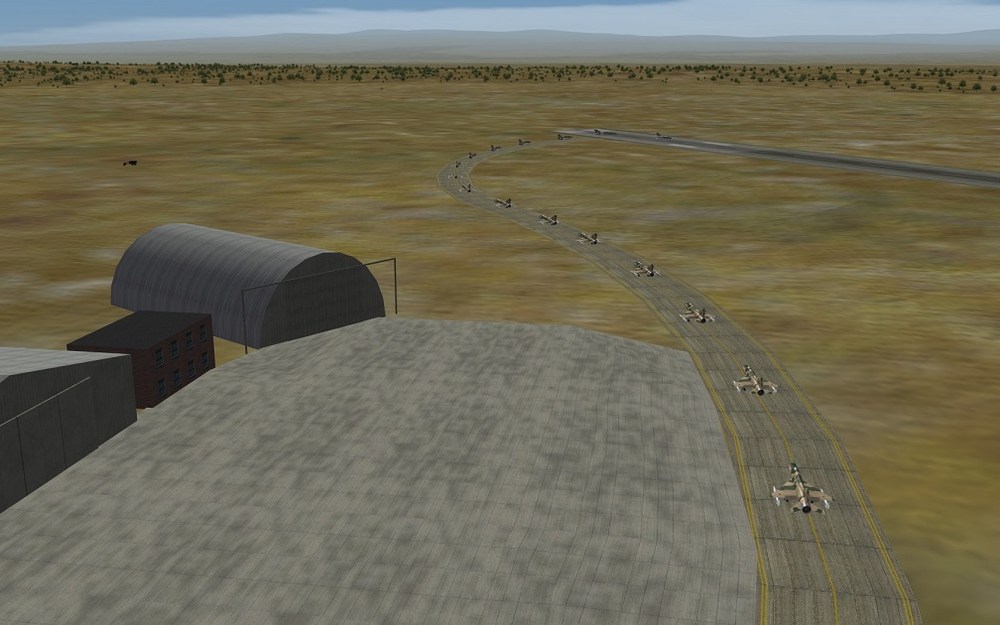
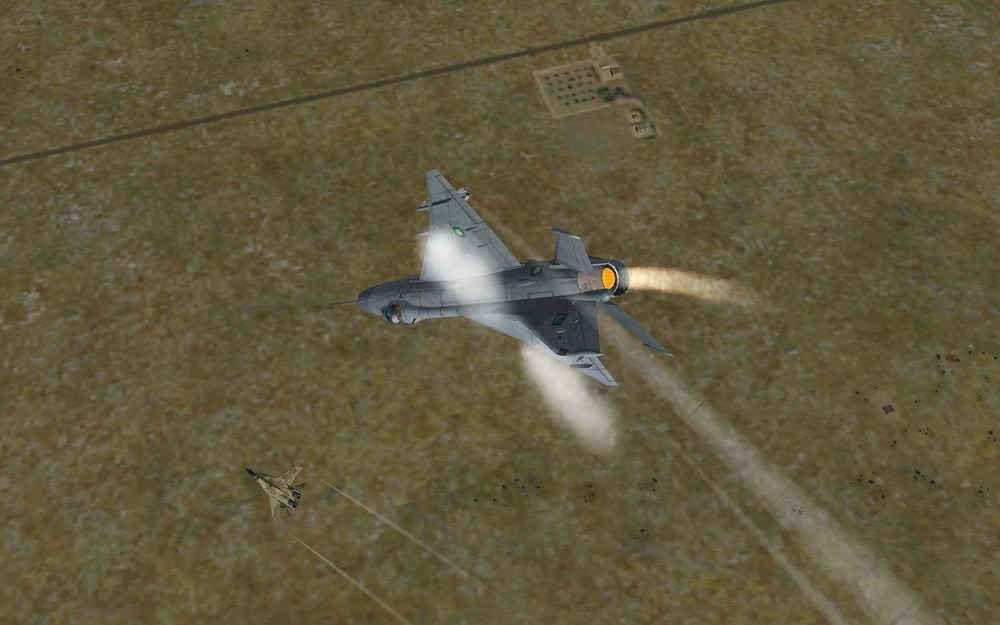
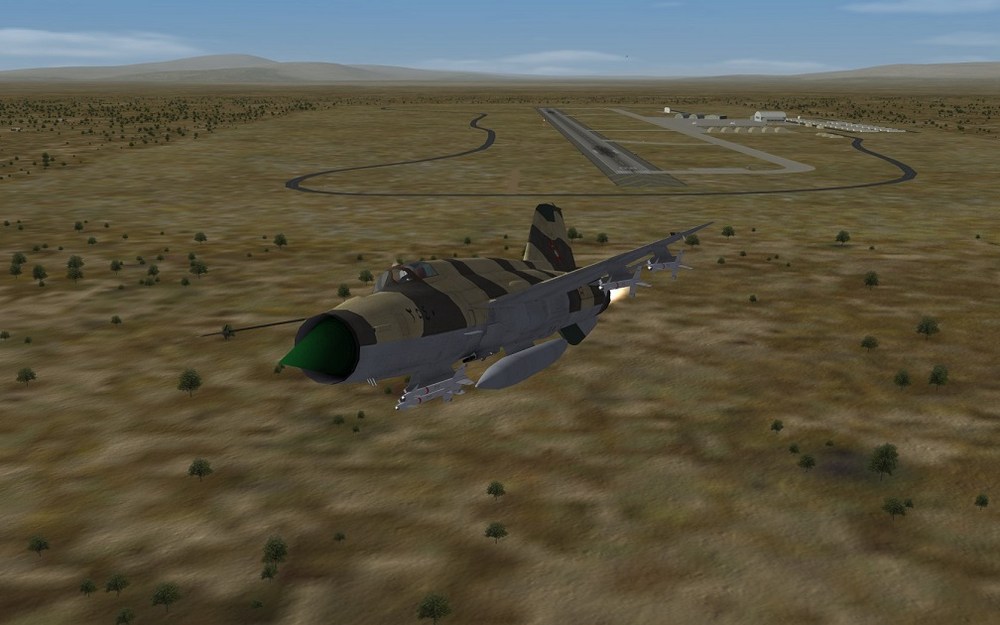

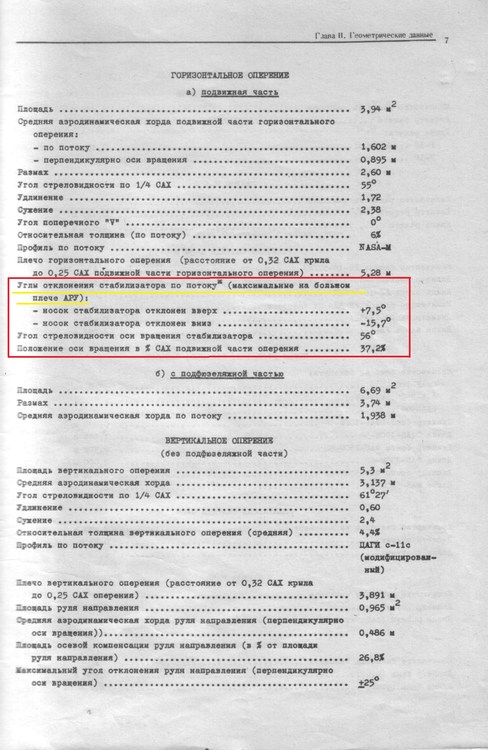
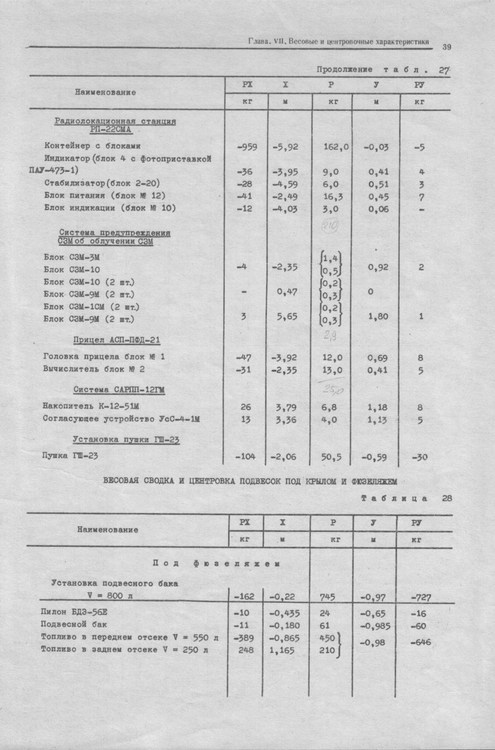
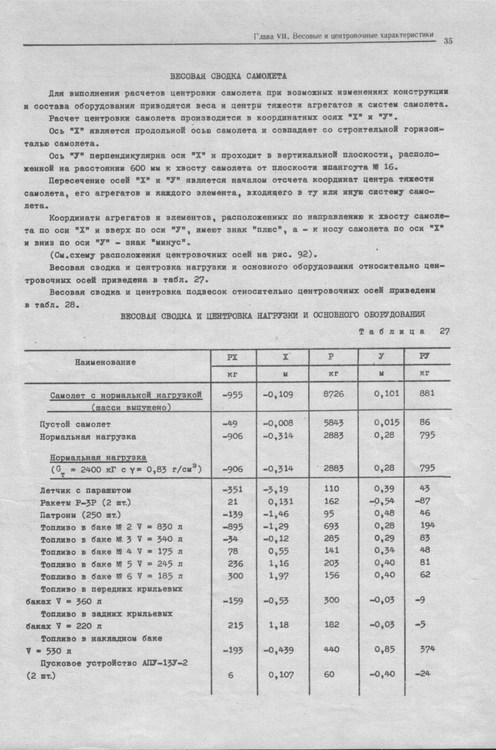
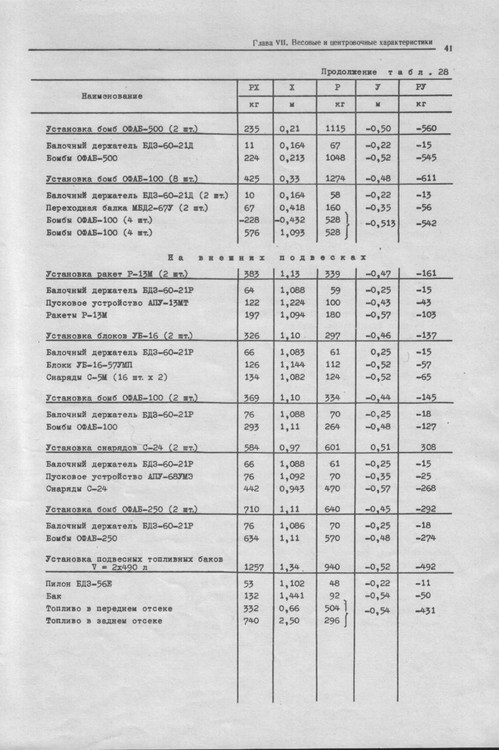
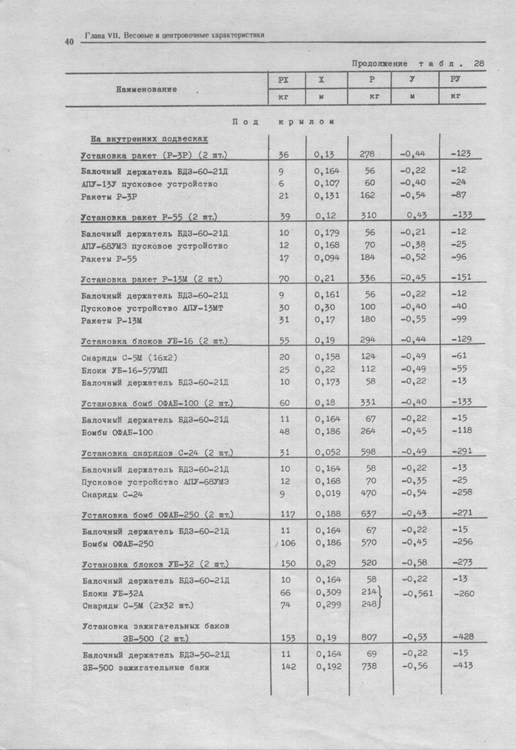
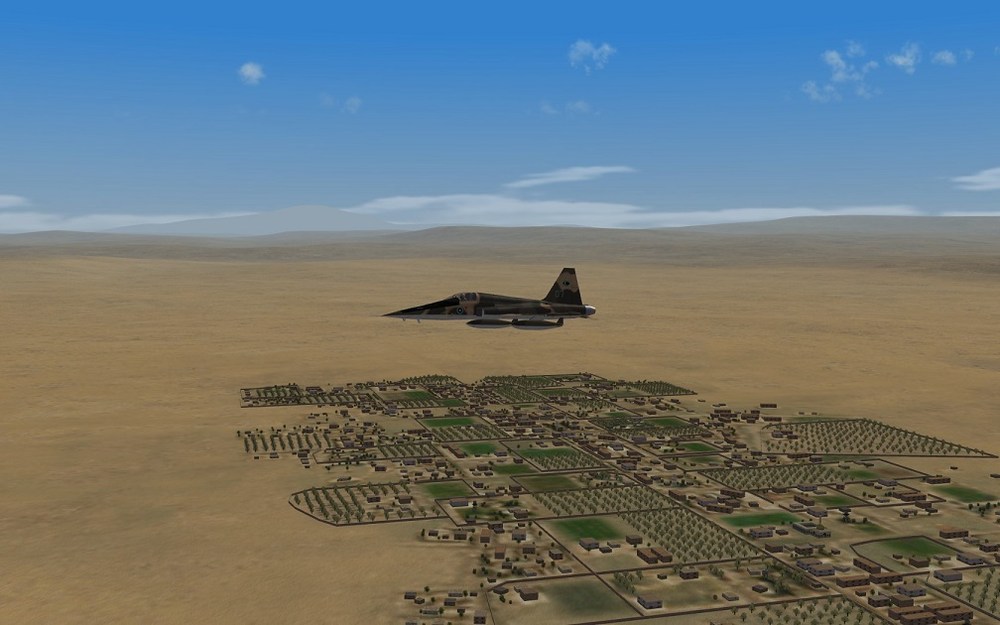
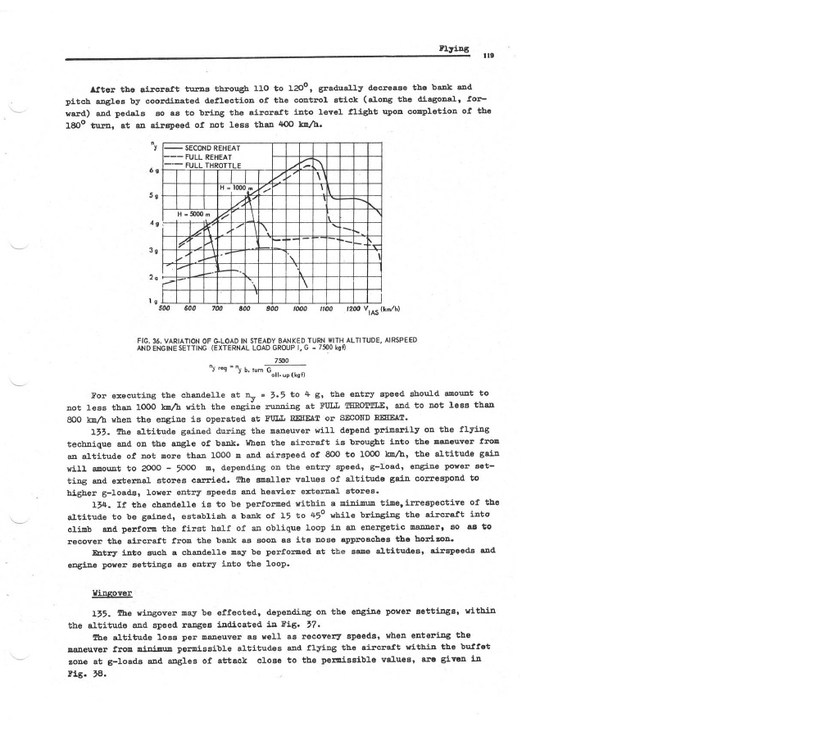
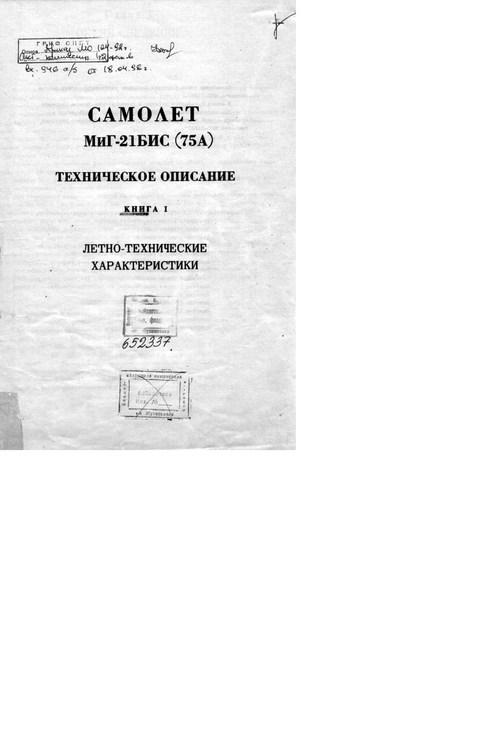
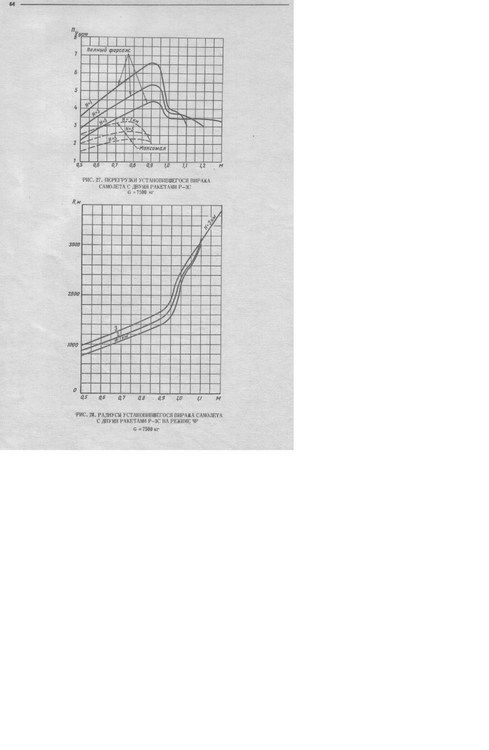
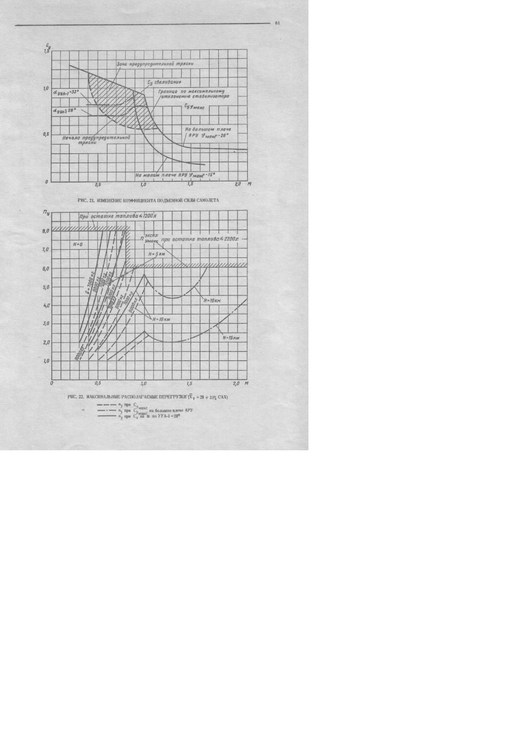
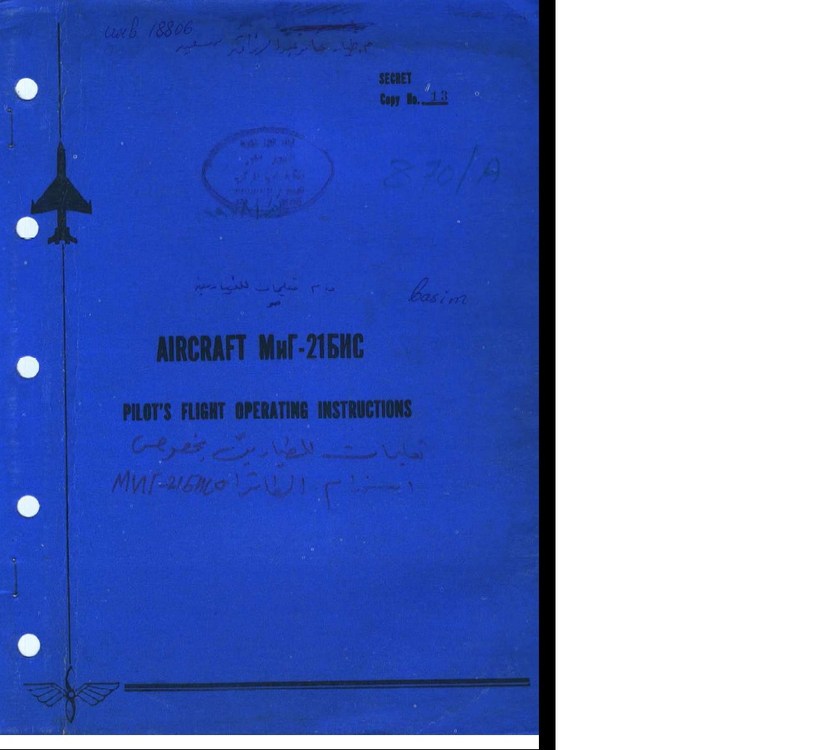
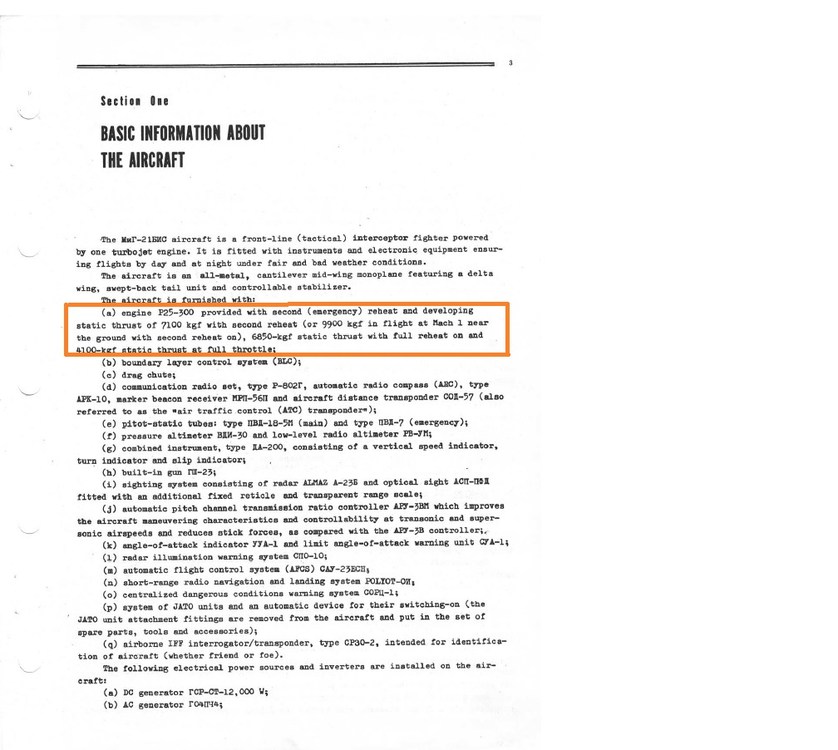
![More information about "SF2 CF-100 MK-5 [BAF]"](https://combatace.com/applications/downloads/interface/legacy/screenshot.php?path=/monthly_2019_06/MK5-1.thumb.jpg.d6d6ec70f88fa6f1b6eed039c75e5e82.jpg)
